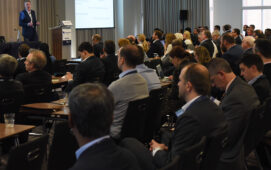French pension fund group Groupe Reunica has been using SAS’s data warehousing solution for around 10 years, but two years ago decided to expand its implementation to cover reporting and has since rolled out SAS Strategy Management (STM). Arnaud Muret, performance director at the group, explains the progress that has been made, what is still to be done and how it has benefited Groupe Reunica thus far in terms of tracking productivity and operational risk.
“The decision to implement SAS STM was taken by our CEO, with a view to using a mixed balance scorecard approach to tracking overall productivity across the group,” explains Muret. This top down approach allowed for decisions to be made quickly and the implementation to proceed without the need for business buy in at every stage. The overall aim of the project has been to get a better handle on the fund’s progress towards achieving its strategic goals in terms of financial, customer focused, growth and sustainable development metrics.
“The desired end result is for each employee to be able to explain how he or she has contributed to the fund achieving each of these goals set by the board,” he elaborates. To this end, the implementation has currently reached manager level and the plan is to extend this down to each employee by the end of the project.
Key performance indicators (KPIs) have been set for the individual teams at the moment and the management team is therefore able to interrogate why individual goals have not been reached. Muret notes that this has involved the definition of around 450 KPIs across the fund for all of its activities and links have been established between these individual KPIs. “There are around 10 or 20 KPIs for each manager at the moment and every manager is therefore able to mark his or her performance against these,” he adds.
In this manner, the group has been able to get a better handle on its operational risk and its productivity. Muret also notes that it is the only group in France (that he knows of at least) to tackle this challenge in this manner.
The reason the fund group opted for SAS in the first place was its traction in the domestic French market and the familiarity of its staff with the vendor’s solutions. “The attraction of the data warehouse solution 10 years ago was the statistical analysis capabilities of SAS and the phased approach it offered,” Muret says.
Muret reckons the implementation will help prepare the fund group to meet the challenges of Solvency II, given that it has facilitated greater efficiency and cost reduction across the group. He notes that perhaps other firms of a similar type may decide to go down this route due to the increasing pressure across the market to get a better handle of operational data and risk.
Certainly, SAS will not be the only firm to make a bid for the attention of the insurers, fund managers and pension funds affected by Solvency II, which is due to be introduced in January next year. SunGard, Standard & Poor’s, Netik, Cadis and a hole host of other vendors have been refining their related messages over the last year or so.
Subscribe to our newsletter




